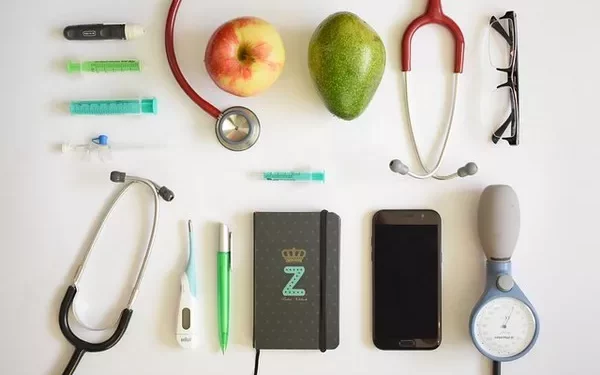Insulin resistance is a condition where the body’s cells become less responsive to insulin, leading to elevated blood sugar levels. It is a common precursor to type 2 diabetes and can also be associated with other health conditions such as obesity, hypertension, and cardiovascular disease. Detecting insulin resistance early is crucial for managing and preventing its progression. This article will provide a comprehensive guide on how to get tested for insulin resistance, including various testing methods, preparation steps, and interpretation of results.
Understanding Insulin Resistance
1. What Is Insulin Resistance?
Insulin resistance occurs when the body’s cells, particularly muscle, fat, and liver cells, do not respond effectively to insulin. Insulin is a hormone produced by the pancreas that helps regulate blood sugar levels by facilitating the uptake of glucose into cells. When cells become resistant to insulin, glucose remains in the bloodstream, leading to elevated blood sugar levels.
2. Causes and Risk Factors
Several factors contribute to insulin resistance, including:
Genetics: A family history of diabetes can increase the risk of insulin resistance.
Obesity: Excess body fat, particularly around the abdomen, is strongly linked to insulin resistance.
Physical Inactivity: Lack of regular physical activity can contribute to the development of insulin resistance.
Diet: Diets high in processed foods, sugars, and unhealthy fats can exacerbate insulin resistance.
Hormonal Changes: Conditions like polycystic ovary syndrome (PCOS) and certain hormonal disorders can impact insulin sensitivity.
3. Symptoms and Complications
Insulin resistance itself may not cause noticeable symptoms, but it can lead to complications such as:
Type 2 Diabetes: Persistent insulin resistance can result in the development of type 2 diabetes.
Cardiovascular Disease: Elevated blood sugar levels and insulin resistance are associated with an increased risk of heart disease and stroke.
Metabolic Syndrome: Insulin resistance is a key component of metabolic syndrome, which includes a cluster of conditions such as high blood pressure, high cholesterol, and abdominal obesity.
Why Testing for Insulin Resistance Is Important
Testing for insulin resistance is essential for early diagnosis and management. Early detection allows for lifestyle modifications and medical interventions to prevent or delay the onset of type 2 diabetes and reduce the risk of associated complications.
1. Identifying At-Risk Individuals
Testing helps identify individuals who are at high risk of developing insulin resistance, enabling proactive management through lifestyle changes and medical treatment.
2. Monitoring Progress
For individuals already diagnosed with insulin resistance or type 2 diabetes, regular testing can monitor the effectiveness of treatment strategies and adjust them as needed.
3. Guiding Treatment Decisions
Test results provide valuable information for healthcare providers to tailor treatment plans, including dietary recommendations, exercise programs, and medication if necessary.
Types of Tests for Insulin Resistance
There are several tests used to assess insulin resistance. Each test has its advantages and limitations, and your healthcare provider may recommend one or more based on your individual circumstances.
1. Fasting Blood Glucose Test
What It Measures
The fasting blood glucose test measures the level of glucose in your blood after an overnight fast. Elevated fasting glucose levels may indicate insulin resistance.
Procedure
Preparation: Fast for at least 8 hours before the test. Only water is allowed during this fasting period.
Blood Sample: A blood sample is taken from a vein in your arm.
Results: Normal fasting glucose levels are typically between 70 and 99 mg/dL. Levels of 100 to 125 mg/dL suggest prediabetes, while levels of 126 mg/dL or higher may indicate diabetes.
2. Oral Glucose Tolerance Test (OGTT)
What It Measures
The OGTT assesses how well your body processes glucose over time. It involves measuring blood glucose levels before and after consuming a glucose-rich drink.
Procedure
Preparation: Fast for at least 8 hours before the test.
Initial Blood Sample: A blood sample is taken to measure fasting glucose levels.
Glucose Drink: You consume a drink containing 75 grams of glucose.
Subsequent Blood Samples: Blood samples are taken at intervals (typically 1 and 2 hours) after drinking the glucose solution.
Results: Normal glucose levels should be below 140 mg/dL at 2 hours. Levels between 140 and 199 mg/dL suggest prediabetes, while levels of 200 mg/dL or higher indicate diabetes.
3. Hemoglobin A1c Test
What It Measures
The A1c test measures the average blood glucose levels over the past 2 to 3 months. It provides an overview of long-term glucose control.
Procedure
No Fasting Required: You do not need to fast before the A1c test.
Blood Sample: A blood sample is taken from a vein in your arm.
Results: Normal A1c levels are below 5.7%. Levels between 5.7% and 6.4% indicate prediabetes, while levels of 6.5% or higher suggest diabetes.
4. Home Insulin Resistance Tests
What It Measures
Some home testing kits claim to measure insulin resistance by assessing blood glucose and insulin levels. However, these tests may not be as accurate or reliable as those conducted in a medical setting.
Procedure
Testing Kit: Follow the instructions provided with the testing kit.
Results: Interpretation of results may vary, and it is advisable to discuss them with a healthcare provider.
5. Insulin Sensitivity Index (ISI) and Homeostasis Model Assessment (HOMA-IR)
What They Measure
ISI and HOMA-IR are mathematical models used to estimate insulin sensitivity and resistance based on fasting blood glucose and insulin levels.
Procedure
Testing: Blood samples are taken to measure fasting glucose and insulin levels.
Calculation: Insulin sensitivity and resistance are calculated using formulas based on the blood glucose and insulin measurements.
Results: These indices provide an estimate of how effectively the body is using insulin.
Preparing for Insulin Resistance Testing
Proper preparation ensures accurate test results and helps your healthcare provider make an informed diagnosis.
1. Follow Fasting Guidelines
For tests that require fasting (such as fasting blood glucose and OGTT), adhere to the fasting instructions provided by your healthcare provider. This usually involves fasting for 8 to 12 hours before the test.
2. Avoid Certain Foods and Drinks
Before testing, avoid foods and drinks that may affect blood glucose levels, such as sugary foods, caffeinated beverages, and alcohol.
3. Inform Your Healthcare Provider
Inform your healthcare provider about any medications, supplements, or health conditions that may affect test results. Some medications can impact glucose and insulin levels.
4. Plan for Multiple Tests
You may need to undergo several tests to obtain a comprehensive assessment of insulin resistance. Discuss with your healthcare provider which tests are recommended for you.
Interpreting Test Results
Understanding test results is crucial for managing insulin resistance effectively. Here’s a guide to interpreting common test results:
1. Fasting Blood Glucose
Normal: 70-99 mg/dL
Prediabetes: 100-125 mg/dL
Diabetes: 126 mg/dL or higher
2. Oral Glucose Tolerance Test (OGTT)
Normal: Less than 140 mg/dL at 2 hours
Prediabetes: 140-199 mg/dL at 2 hours
Diabetes: 200 mg/dL or higher at 2 hours
3. Hemoglobin A1c
Normal: Below 5.7%
Prediabetes: 5.7%-6.4%
Diabetes: 6.5% or higher
4. Insulin Sensitivity Index (ISI) and HOMA-IR
ISI: Higher values indicate better insulin sensitivity; lower values suggest insulin resistance.
HOMA-IR: Values above 2.5 indicate insulin resistance, but this can vary depending on individual factors.
Managing Insulin Resistance
If you are diagnosed with insulin resistance, managing it involves a combination of lifestyle changes and medical interventions.
1. Lifestyle Modifications
Diet: Focus on a balanced diet with whole grains, lean proteins, healthy fats, and plenty of vegetables. Limit refined sugars and processed foods.
Exercise: Engage in regular physical activity, such as brisk walking, cycling, or swimming, to improve insulin sensitivity.
Weight Management: Achieving and maintaining a healthy weight can help reduce insulin resistance.
2. Medical Interventions
Medications: In some cases, medications may be prescribed to improve insulin sensitivity and manage blood sugar levels.
Monitoring: Regular monitoring of blood glucose levels and other relevant health markers is essential for managing insulin resistance effectively.
3. Consulting with Healthcare Professionals
Work closely with your healthcare provider, dietitian, or endocrinologist to develop a personalized plan for managing insulin resistance. They can provide guidance on dietary choices, exercise, and medication if needed.
See also: What Medication Helps with Insulin Resistance?
Conclusion
Getting tested for insulin resistance is a critical step in identifying and managing this condition. By understanding the various testing methods, preparing properly, and interpreting results accurately, you can take proactive steps to manage insulin resistance and reduce the risk of developing type 2 diabetes and other associated health conditions.
If you suspect you may have insulin resistance or are at risk, consult with your healthcare provider to discuss testing options and develop a comprehensive management plan. Early detection and intervention can lead to better outcomes and a healthier future.
Related topics:
What Is Insulin Resistance Weight Loss?

























